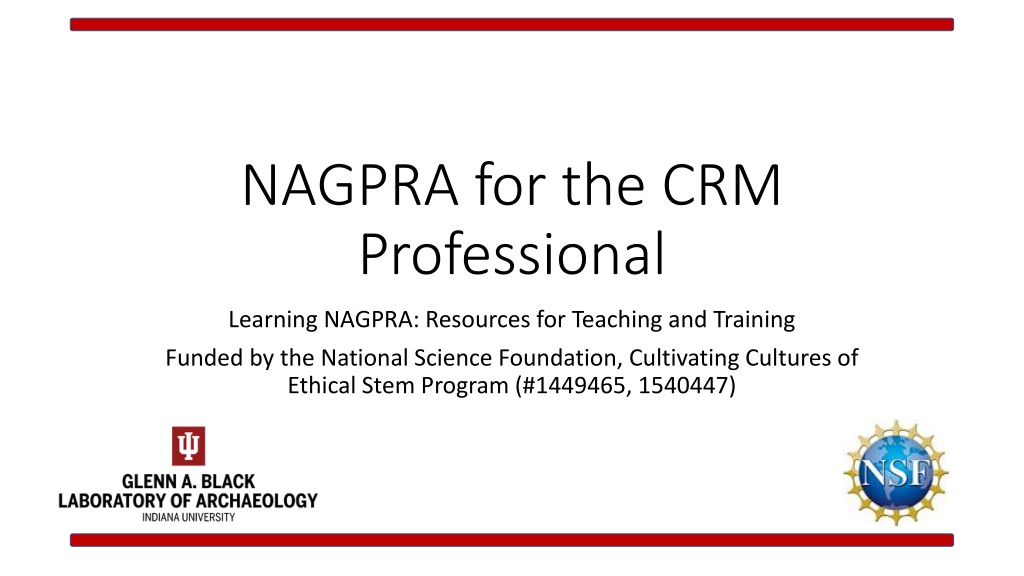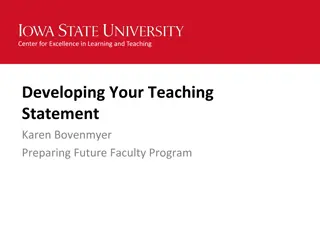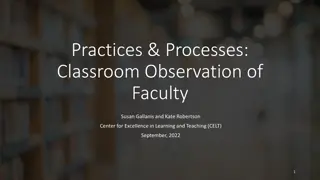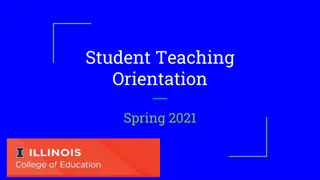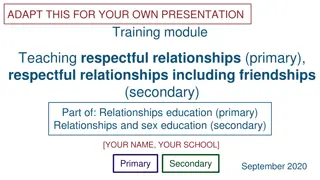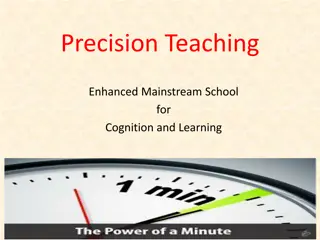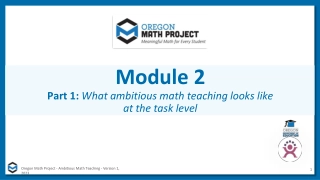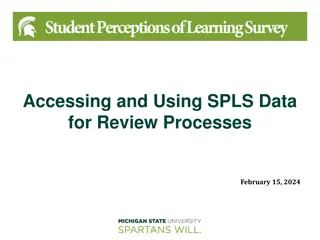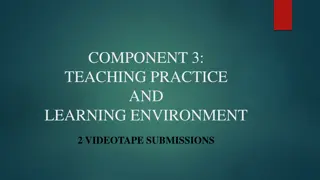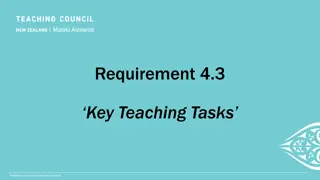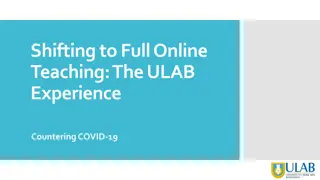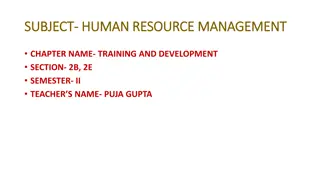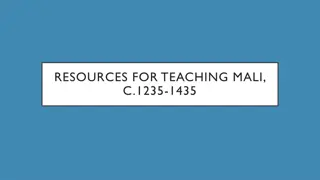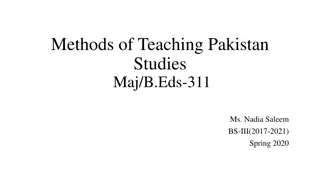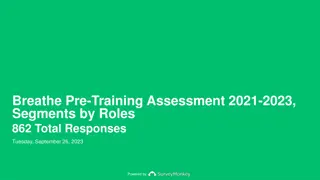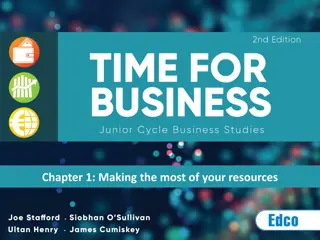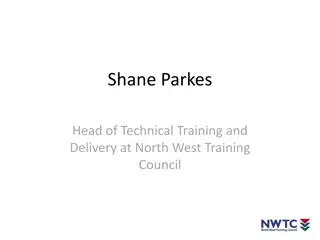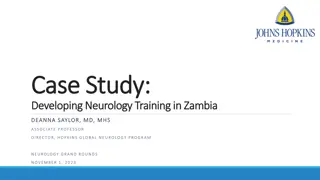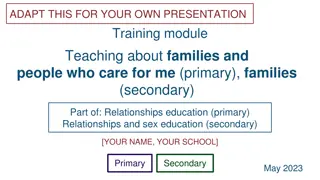Understanding NAGPRA: Teaching and Training Resources
This resource provides insights into the Native American Graves Protection and Repatriation Act (NAGPRA) through multiple topics, including regulations, consultation processes, cultural meanings, and management of collections. Learning objectives focus on compliance with NAGPRA, responsible parties in consultation, cultural diversity, and the necessity of consultation in archaeological work. The legislation, fieldwork guidance, and the intersection of laws and archaeology are also discussed.
Download Presentation

Please find below an Image/Link to download the presentation.
The content on the website is provided AS IS for your information and personal use only. It may not be sold, licensed, or shared on other websites without obtaining consent from the author. Download presentation by click this link. If you encounter any issues during the download, it is possible that the publisher has removed the file from their server.
E N D
Presentation Transcript
NAGPRA for the CRM Professional Learning NAGPRA: Resources for Teaching and Training Funded by the National Science Foundation, Cultivating Cultures of Ethical Stem Program (#1449465, 1540447)
Presenters April K. Sievert, PhD, RPA, Director, Glenn A. Black Laboratory of Archaeology, Indiana University, Bloomington, IN. Teaching, field, laboratory, and repatriation experience. Patricia Powless, MA, RPA, Amec Foster Wheeler, 30 years experience in compliance archaeology. Kerry Sagebiel, PhD, RPA, Northern Illinois University, broad experience in both doing and teaching cultural resource management.
Six Topics Covered Introduction to the Native American Graves Protection and Repatriation Act regulations (43 CFR 10) Consultation at the planning stage Conveying NAGPRA compliance to staff Cultural meanings for objects and places Consultation after discovery in the field Cultural affiliation Management of collections post-discovery Conclusion
Learning Objectives Understand when field projects must comply with NAGPRA Differentiate between responsible parties in consultation Recognize diversity of cultural meanings for places and objects Evaluate why consultation is needed at different stages of archaeological work and what it entails
Introduction to the legislation Public Law 101-601 enacted Nov. 16, 1990 Codified under Title 23 section 32 in United States Code (USC) Regulations set forth by the Department of the Interior delineated under 43 CFR 10.
Fieldwork Collections https://www.nps.gov/nagpra/T RAINING/NAGPRA_at_a_glance. pdf
Laws and archaeology Three laws govern treatment of archaeological resources related to Federal lands or support NHPA Section 106 applies to cultural resources impacted by federal or federally-assisted projects. ARPA Protects archaeological resources on public or tribal land. Requires permitting and an archaeological plan. NAGPRA Protects burials and cultural objects on Federal or tribal land and provides mechanism to repatriate materials held by federally-funded institutions.
Consulting at the Planning Stage An ounce of prevention is worth a pound of cure
Who is responsible for consultation? Tribes as sovereign dependent nations operate, with respect to most federal laws, using government to government relationships . The responsibility for initiating consultation lies with the FEDERAL AGENCY
Questions to consider when planning Is this project on federal or tribal land? Do you intend to recover human remains, funerary objects, sacred objects, or objects of cultural patrimony? Might you inadvertently discover human remains and cultural objects? Has the federal agency involved taken the steps necessary for consultation? How will these questions be addressed in a written PLAN OF ACTION (POA)?
What does the Plan need? NAGPRA 10.5 section (e) 1. Kinds of objects expected 2. Information needed to determine custody 3. How remains and objects will be treated by archaeologists 4. How remains and objects will be reported 5. Kinds of analysis planned 6. Steps to follow for notification of tribal officials 7. Kinds of traditional treatments to be afforded remains and objects 8. Nature of reports to be prepared 9. Plan for disposition of remains and objects (We will return to these requirements later in the Webinar)
Having a plan means Consulting before doing any fieldwork results in: 1. A clear path toward repatriation or reburial 2. Assistance from the tribe(s) in determining custody and cultural affiliation
Can NAGPRA kick in if you are NOT on federal or tribal land? YES- but it will be under the collections provisions. If you collect materials on a federally assisted project, the materials may be subject to repatriation according to NAGPRA, depending on whether or not a federal agency has control of the remains. If materials are to be under control of a federally funded repository, they become subject to NAGPRA, regardless of the source of funding that supported the project.
Best practice? If on federal or tribal land, planning is mandatory. If federal money or licensing is involved, plan anyway. If no federal money or licensing is involved, plan anyway. Be aware of state regulations regarding burials, because these may require action involving tribes regardless of funding or disposition.
Ways to build good relationships In-person consultation is more effective that electronic or telecommunication. Work with the correct tribal personnel. The agency should initiate contact with an elected tribal official government-to-government, but also with a THPO or other tribal professional. Develop relationships that you can go back to when needed.
How much does your field staff need to know Familiarity with tribal nations in the region Familiarity with conditions of the work plan Communication protocols to follow in case of inadvertent discovery How to be respectful of tribal perspectives on objects and places. Cultural sensitivity training, e.g. from Department of the Interior or directly from an affiliated tribe
Cultural Meanings Objects and Places
Changing our perception of the cultural meaning of objects and places Understand and acknowledge that Native Americans see artifacts, human remains, and places as animate, ancestors, and sacred places. Understand and acknowledge that Native Americans are the living descendants of the creators of the cultural resources we are studying. New tribal scoping methods will likely mean setting aside some of the budget. Do your cultural history research well before fieldwork. Send out tribal letters asking for meetings; not just for information. Ask the right (or specific) questions and choose your words wisely.
Consultation after Discoveries in the Field
Priorities of ownership and disposition for repatriation Lineal Descendants Tribe or Native Hawaiian Organization (NHO) on whose tribal and the remains were recovered Tribe or NHO having the closest cultural affiliation If remains are on federal land, the tribe or NHO having recognized homelands in that location Or: preponderance of evidence indicating a different tribe with stronger evidence of cultural affiliation
Cultural Affiliation Cultural Affiliation means that there is a relationship of shared group identity, which can be reasonably traced historically or prehistorically between a present day Indian tribe or NHO and an identifiable earlier group (25 USC 3001(2)). Cultural Affiliation is established when the preponderance of evidence based on geographical, kinship, biological, archeological, linguistic, oral tradition, historical evidence or other information or expert opinion reasonably leads to such a conclusion (43 CFR 10.2(e)).
To remember Cultural affiliation is determined by a preponderance of evidence Claimants do not have to establish cultural affiliation with scientific certainty. It is best to research multiple lines of evidence historical, sociocultural, archaeological and scientific.
43 C.F.R. 10.14 Requirements for cultural affiliation: The existence of an identifiable present-day Indian tribe or NHO with standing under NAGPRA Evidence of the existence of an identifiable earlier group Evidence of the existence of a shared group identity, which can be reasonably traced as descending from prehistoric or historic times to the present-day Indian tribe or NHO.
43 C.F.R. 10.14 Process: Establish the identity and cultural characteristics of the earlier group Document distinct patterns of material culture manufacture and distribution methods for the earlier group Or establish the existence of the earlier group as a distinct biological population Use evidence: geographical, kinship, biological, archaeological, anthropological, linguistic, folklore, oral tradition, historical, expert opinion or other relevant information
National NAGPRA on cultural affiliation Findings of cultural affiliation are based upon an evaluation of the totality of the circumstances and evidence. A finding of cultural affiliation can be made even if there are gaps in the record.
Strategies for Care and Management of NAGPRA Collections from the Field to Repatriation
Sources for Curation Guidelines NAGPRA The curation of federally owned and administered archaeological collections (36 CFR 79) regulations Secretary of the Interior s Standards and Guidelines for Archeology and Historic Preservation Set these out in your written Plan of Action (POA)
What does the POA need? NAGPRA 10.5 section (e) 1. Kinds of objects expected 2. Information needed to determine custody 3. How remains and objects will be treated by archaeologists 4. How remains and objects will be reported 5. Kinds of analysis planned 6. Steps to follow for notification of tribal officials 7. Kinds of traditional treatments to be afforded remains and objects 8. Nature of reports to be prepared 9. Plan for disposition of remains and objects
Plan of Action must have 1. A description of the kinds of objects to be considered as cultural items This should be completed in consultation with potentially affiliated tribes and NHOs Tribal Monitors 6. The steps to be followed when contacting the affiliated tribes and NHOs 2. The information that will be used to determine custody of NAGPRA remains and objects This is where cultural affiliation studies are useful and where consultation is vital Detailed descriptions of which kinds of remains and objects will be repatriated to each group Broad categories based on date or age of the remains and objects, specific geographical location, specific burial type, specific artifact classes Agreement will be reached after further consultation once any remains or objects are discovered
The POA must include 3. How remains and objects subject to NAGPRA will be recorded in the field and laboratory Type of receptacles Whether (and in what quantity) surrounding soil or matrix will be collected Whether and what kinds of examinations, analyses, and tests can be made Whether any samples can be taken, what kinds, and in what manner What recording methods may be used, including notes, maps, drawings, videos, photography, or scans
The POA must have 7. The kinds of traditional treatment, if any, that will be afforded the remains and objects by affiliated tribes. In the field, if ceremonies are to take place, consider: Time, space, quietude, privacy Removal of archaeological equipment and personnel from the area Cessation of any construction activities while the ceremony takes place Safe passage to and from the location for participating tribal and NHO members
Traditional treatment In the laboratory or repository Tribal and NHO members may need regular access to remains, sacred objects, and objects of cultural patrimony for ceremonies, or the feeding or smudging of items. Special areas for ceremonies and other activities may need to be set aside. If human remains and cultural items are to be repatriated, the time, place, and means of transfer should be agreed to in the POA.
The POA must address 3. Planned treatment, care, and handling of NAGPRA remains and items, and 5 the kinds of analyses (if any) that will be performed. Cleaning methods and analyses, particularly destructive analyses, should be agreed along with time lines for completion. Disposition of any residue or any remnants should be agreed upon. Special packaging, labeling, and housing that causes little or no damage to the item. use of preservatives, pesticides, adhesives, and other substances in the field, laboratory, and curation facility
The POA must also include 10. The final disposition of the NAGPRA remains and items Objects allowed to breathe, to be fed, to face a particular direction or Handling restricted to certain people by virtue of gender, age, religious training and knowledge. Particularly powerful objects isolated or kept separate from other objects. Repairs to objects carried out by religious practitioners who have sacred knowledge and can enact the necessary rituals
The POA must address 8. The nature of reports to be prepared. what kind of information will be in field reports and how those will be disseminated disposition of related documents, particularly photographs, videos, drawings, and similar images
